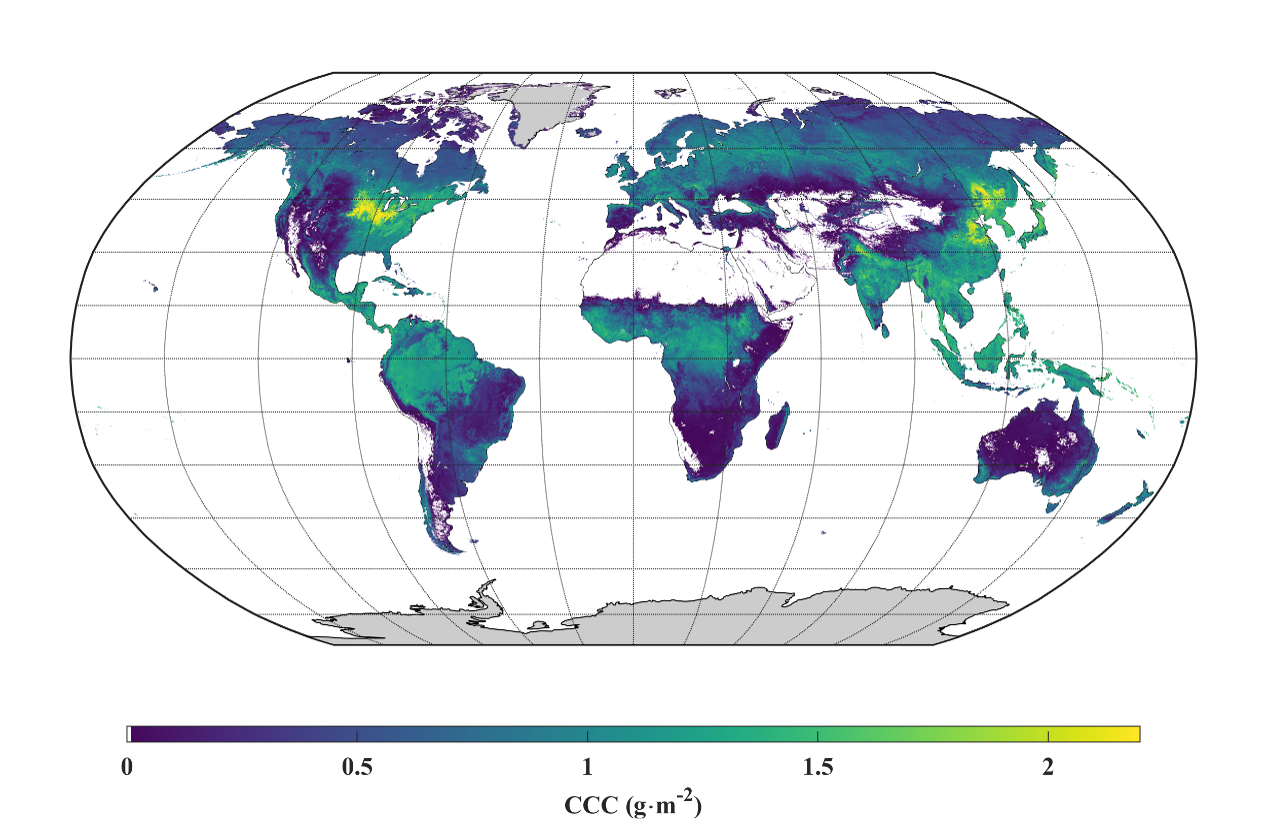Researchers at the Technical University of Munich (TUM) have developed a method to record plant health worldwide. Based on satellite images, the method uses a hybrid intelligence approach to deliver reliable data on a weekly basis. This not only helps science, but also agriculture and climate planning.
Global thinking - global data. A common data basis is the prerequisite for efficient and informed action. Up to now, this has, however, been lacking for plant health, which is of great importance for global agriculture and climate research. Researchers at TUM have therefore developed a method to estimate plant health that has been validated for diverse and global landscapes.
Hybrid intelligence
The two-step method employs physical models based on light-plant interactions and artificial intelligence: First, a physical model is used to determine the relationship between chlorophyll and canopy reflectance data. In a second step, this data then serves as training material for artificial intelligence models which automates calculation for the plant health measure.
"By using this hybrid intelligence approach, our method overcomes the limitations of typically used methods thar rely on reflectance datasets from the earth's surface", explains Dong Li, first author of the publication. The trained AI models can estimate the canopy chlorophyll content directly from satellite-observed reflectance data and thus circumventing usual issues with data from surface data such as partially cloudy conditions.
 Li et al. / Remote Sensing of Environment /Creative Commons License
Li et al. / Remote Sensing of Environment /Creative Commons License Observing dynamics in plant health and growth
Chlorophyll content is directly proportional to a plant's metabolic activity as it is the central molecule of photosynthesis. Its abundance is therefore an indicator for plant health and growth which aids in estimating biomass production, i.e. yields.
Since the method is based on nearly weekly updated satellite data, the index offers insights into dynamic changes. "We can observe how the plants respond to varying conditions such as temporal variations due to climate change", explains Prof. Kang Yu from the chair of Precision Agriculture at the TUM. The indicator may therefore be of interest for modelers to quantify crop vitality and earth surface processes, which in return can be used to inform global decision-making in agriculture and climate adaptation.
Dong Li, Holly Croft, Gregory Duveiller, Adam P. Schreiner-McGraw, Anirudh Belwalkar, Tao Cheng, Yan Zhu, Weixing Cao, Kang Yu, Global retrieval of canopy chlorophyll content from Sentinel-3 OLCI TOA data using a two-step upscaling method integrating physical and machine learning models, Remote Sensing of Environment, Volume 328, 2025, 114845, ISSN 0034-4257, https://doi.org/10.1016/j.rse.2025.114845 .
Prof. Kang Yu is professor for the Chair of Precision Agriculture. His chair is affiliated with the TUM School of Life Sciences and the World Agricultural Systems Center - Hans Eisenmann-Forum for Agricultural Sciences .






